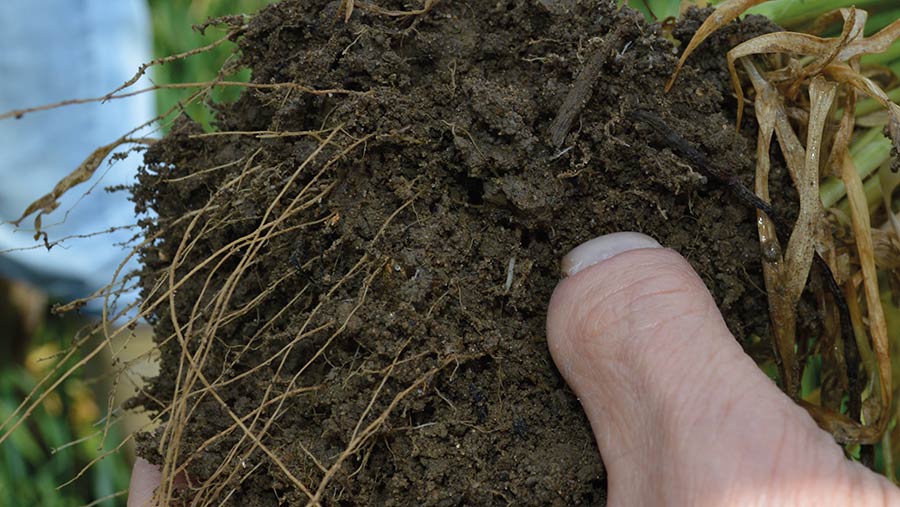Growers to benefit from new soil resilience service
 © MAG/David Jones
© MAG/David Jones Agronomy company Agrii has launched a service aimed at helping farmers improve the resilience of their soils and sustainability of their cropping systems.
Developed following studies with the UK Centre for Ecology and Hydrology (UKCEH) and others, the Green Horizons Soil Resilience Strategy pulls together the latest understanding of soil structure, chemistry and biology.
See also: How to offset high fertiliser prices in arable crops
Farmers are looking to answer key questions such as how they can reduce tillage without adding to their risk. Or it could be they want to know how much carbon they can realistically store, or why certain areas of fields are underperforming?
Provided by Agrii agronomists and Rhiza specialists, Kent agronomist Tom Kirby says it starts with a thorough soil health assessment involving broad-spectrum laboratory nutrient, pH and organic matter testing, to which can be added more detailed measurements of soil carbon at different depths.
Clay-to-carbon ratio
Senior Agrii agronomist Andrew Richards says a new measure of soil health is at the heart of the approach.
“Our work with UKCEH has shown the clay:carbon ratio of soils is a much more useful measure of their resilience than organic matter alone,” says Mr Richards.
Because clay particles bind organic matter, the greater the clay content of a soil, the more organic carbon it can store, but the higher the level it will require to be resilient and the slower it will be to build, he says. “So, we have made this metric central to our approach.”
Only by establishing exactly where soils sit on the clay:carbon resilience scale developed from Rothamsted work with the national soil survey, can Agrii advisers provide the most practical recommendations for both soil health and soil carbon storage improvements, he explains.
In practice
One example shows how the new service can help a Cambridgeshire farmer with his quest to improve soil health to enable reduced cultivations.
David Felce farms 97ha of challenging silty soils near St Neots, and he is exploring ways of using more minimum tillage by carrying out trials in one field.
Mr Kirby explains that for every 5cm increase in depth of cultivations, costs rise by £3/ha.
The ongoing trial is comparing a direct drill with a spring tine/power harrow combination.
Cover cropping, including phacelia, black oats and vetch, is also being investigated as part of the transition with and without cultivations, as the soil is prone to slumping and compaction.
A low-disturbance subsoiler was subsequently run through the plot, with the legs at 200mm depth and 400mm apart.
At the time of Farmers Weekly’s visit, just before the cover crop was sprayed off prior to spring barley drilling, the cover crop rooting was much more extensive where cultivations had also been carried out, breaking up the compaction.
Some of the practical soil assessments showed the value of the root and metal combination, with the blue dye showing greater infiltration when compared with a cover crop alone.
In the uncultivated area, there was pooling of the dye, suggesting a compaction pan, says Mr Kirby.
The conclusion was that to maximise the benefits from growing cover crops on the silt soil, it should be done in combination with metal.
